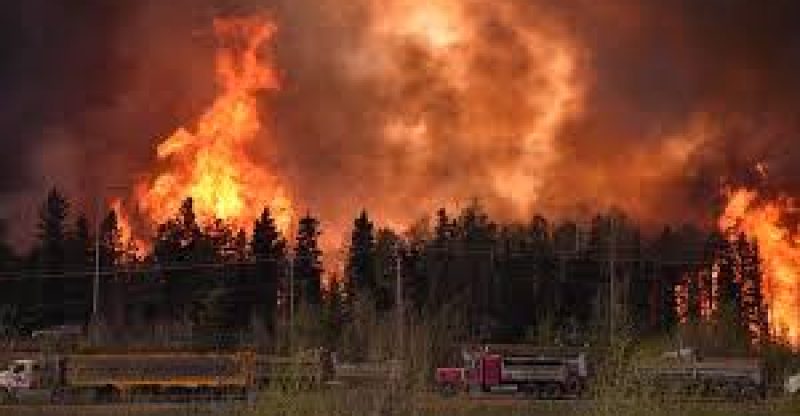Canadian Economy Reports Major Drop In GDP Since 2009 Recession, Incensed By Alberta Wildfires
Statistics Canada reported on Wednesday that the Canadian economy shrank in the second quarter to its worst performance in seven years.
According to the federal agency, the real gross domestic product plummeted at an annualized rate of 1.6 percent within the three-month period, mostly as a result of the wildfires that destroyed parts of Fort McMurray, Alberta.
This marks the biggest quarterly decline since the second quarter of 2009 when Canada was in the middle of the global financial crisis.
The downturn was compared with growth at an annual pace of 2.5 percent in the first quarter, which was reviewed from a previous reading of 2.4 percent.
According to Thomson Reuters, economists were anticipating a drop of 1.5 percent in the second quarter.
Avery Shenfeld of CIBC Capital Markets, in a research note said, “It wasn’t pretty, but it wasn’t expected to be.”
The fall in GDP followed the drop in the exports of goods and services to 4.5 percent in the quarter, subsequent to a 1.9 percent increase in the first three months of the year.
Having already suffered from the drop in energy prices, the Alberta Wildfires was a tough blow to the energy sector, leading to the evacuation of Fort McMurray and closure of several oilsands operations in the area.
Energy product exports dropped 7.5 percent, as crude and bitumen exports dwindled 9.6 percent and refined petroleum products plummeted to a shocking 19.6 percent. Additionally, motor vehicles and parts fell by 5.8 percent because of lower exports of passenger cars and light trucks.
However, going up 5.6 percent were exports of aircraft and other transportation equipment and parts.
Despite the fallback for the quarter in general, the economy ended with growth in June.
Statistics Canada stated that real GDP increased 0.6 percent that same month, partially boosted by non-conventional oil extraction as production in Albert oilsands area resumed. Thomson Reuters’ economists were hoping for a gain of 0.4 percent for the month.
Mining, quarrying and oil and gas extraction clambered 3.6 percent in June, enhanced by a 12 percent gain in non-conventional oil extraction.
“The best news was that June GDP rebounded with a brighter than expected 0.6 per cent gain, and less than half of that came from the rebound in mining/oil/gas, as manufacturing also had a healthy gain,” Shenfeld said.
“All told, a quarter we will like to forget, and for the next few months, a more supportive Q3 will help us do just that.”
The second-quarter posted on Wednesday was worse than forecast given by the Bank of Canada in its July monetary policy report. The central bank had projected that the economy would decline at an annual rate of 1.0 percent during the second quarter as a result of the damage caused by the wildfires.
Nevertheless, the Bank of Canada also predicted that growth will heighten in the third quarter to an annual pace of 3.5 percent as oil productions pick up pace and reconstruction is underway in Fort McMurray.
It is also expectant that the federal government’s new Canada child benefit and a growth in infrastructure spending could assist in pushing the economy.





